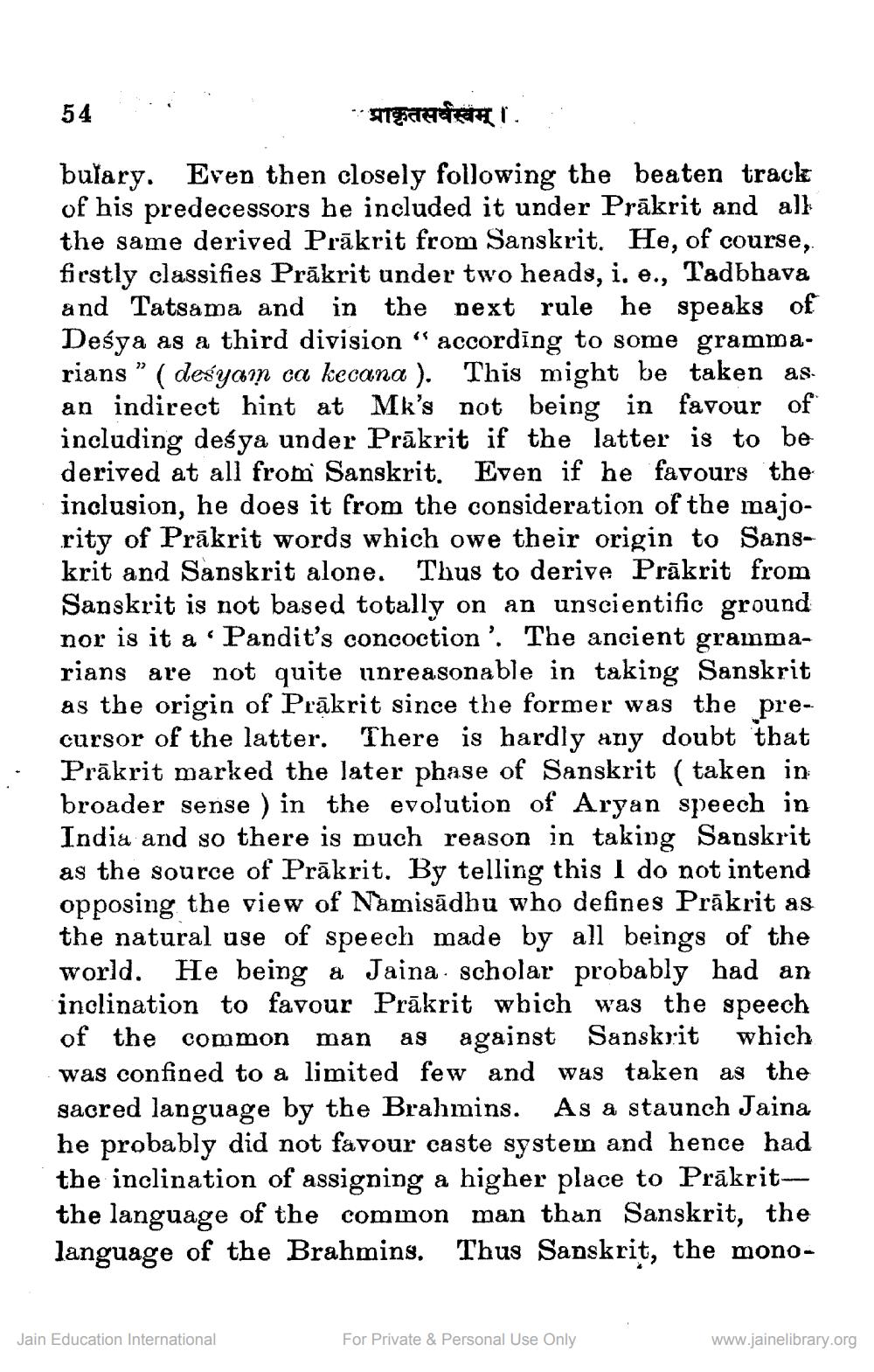________________
SITETI
bulary. Even then closely following the beaten track of his predecessors he included it under Prākrit and al} the same derived Prākrit from Sanskrit. He, of course, firstly classifies Prākrit under two heads, i.e., Tadbhava and Tatsama and in the next rule he speaks of Deśya as a third division “ according to some grammarians” (desyain ca kecana ). This might be taken as an indirect hint at Mk's not being in favour of including deśya under Prākrit if the latter is to be derived at all from Sanskrit. Even if he favours the inclusion, he does it from the consideration of the majority of Prākrit words which owe their origin to Sanskrit and Sanskrit alone. Thus to derive Prākrit from Sanskrit is not based totally on an unscientific ground nor is it a Pandit's concoction'. The ancient grammarians are not quite unreasonable in taking Sanskrit as the origin of Prakrit since the former was the precursor of the latter. There is hardly any doubt that Prākrit marked the later phase of Sanskrit ( taken in broader sense ) in the evolution of Aryan speech in India and so there is much reason in taking Sanskrit as the source of Prākrit. By telling this I do not intend opposing the view of Namisādhu who defines Prākrit as the natural use of speech made by all beings of the world. He being a Jaina scholar probably had an inclination to favour Prākrit which was the speech of the common man as against Sanskrit which was confined to a limited few and was taken as the sacred language by the Brahmins. As a staunch Jaina he probably did not favour caste system and hence had the inclination of assigning a higher place to Prākritthe language of the common man than Sanskrit, the language of the Brahmins. Thus Sanskrit, the mono
Jain Education International
For Private & Personal Use Only
www.jainelibrary.org




